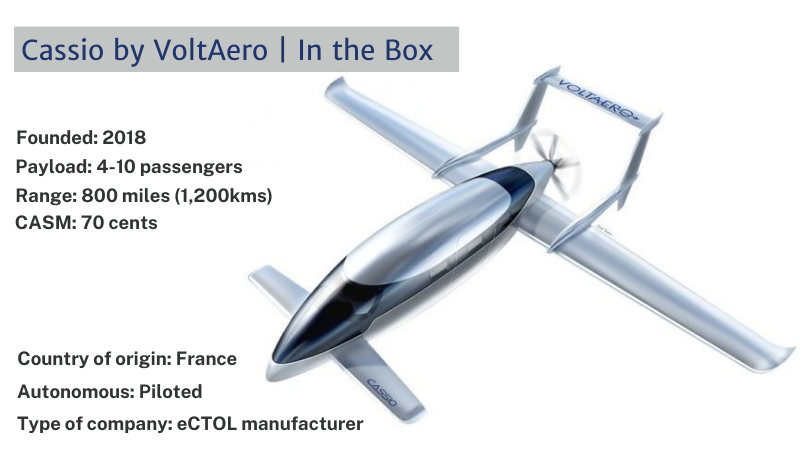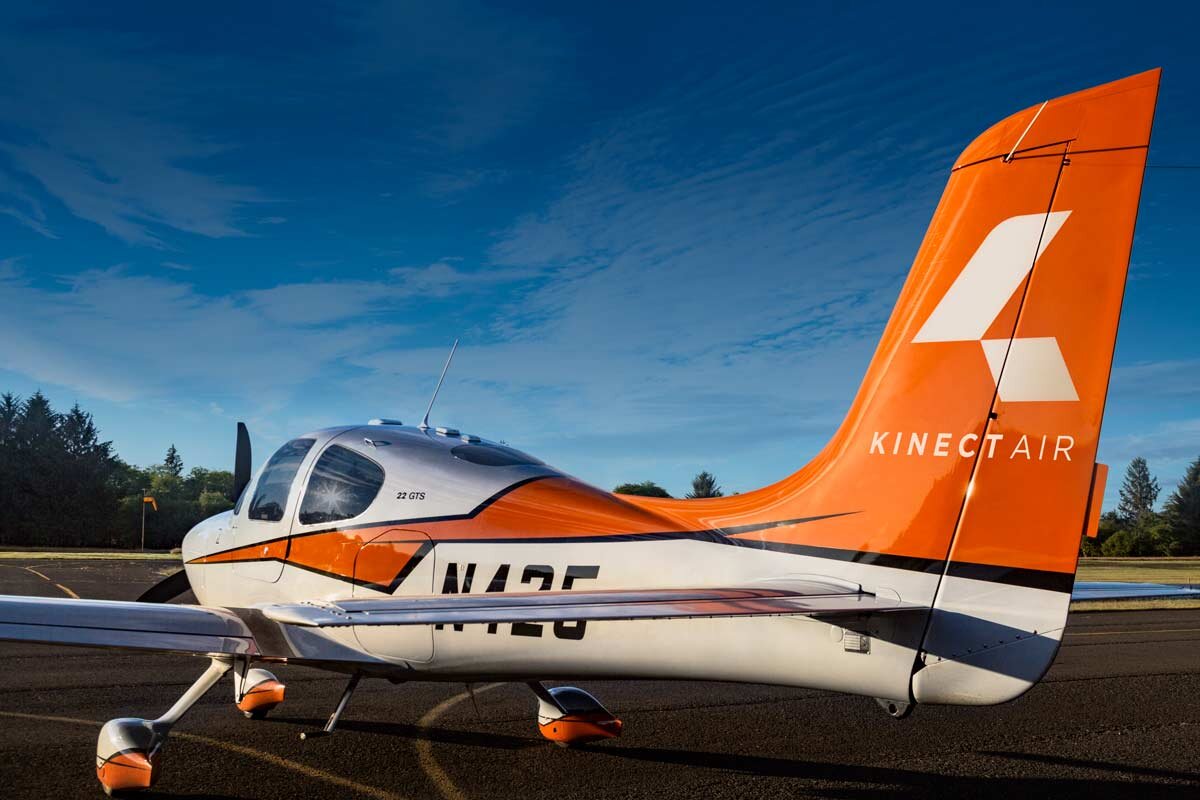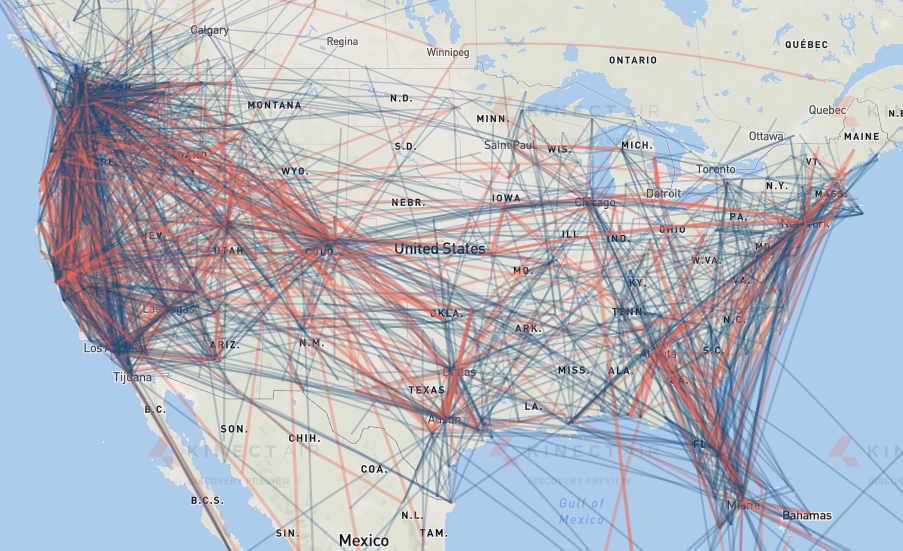Revolution.Aero Uplift: VoltAero and KinectAir partnership takes flight

exc-60a4e979064ee75be0b4628f
When an ex-Airbus chief technical officer decides to build an electric conventional take-off and landing plane, expected to be in production by 2023, other aviators are bound to take notice. This is exactly how Jean Botti, CEO and co-founder, VoltAero and Jonathan Evans, CEO, KinectAir came to be partners.
Botti oversaw the launch of Airbus’s very first electric aircraft ventures – the Electric Cri-Cri and E-Fan X – in 2011 and 2015 respectively. While Evans flew UH-60 Black Hawks for the US military, as well as on-demand air ambulance missions. He also started a drone software company called Skyward, which was acquired by Verizon.
Next on the roadmap is a collaboration between the two to bring regional hybrid-electric operations via an electric conventional take-off and landing (eCTOL) aircraft by 2023. Cassio will be able to seat four to 10 people, flying a range of 800 miles (1200kms). The aircraft will be piloted to begin, with possible autonomous capabilities in the near future.
His role at Airbus means Botti knows how to make an aircraft airworthy and production certificate-worthy, said Evans. The powertrain for Cassio is currently being validated using a testbed aircraft.
Further, VoltAero will have industry partners – such as motors by Safran Electrical & Power – to create the final product.
Having flown helicopters – and landed on hospital helipads – for most of his life, Evans says it will be an “uphill battle” to get to a volume and price point of aircraft that can carry out urban missions efficiently.
“The edge of the aerospace envelope is the rooftop-to-rooftop take-off and landing helicopter. That’s using good old-fashioned jet A kerosene in a PT6 engine, optimised for thrust to weight ratio, that’s been tried and true for over 30 years,” Evans said.
Instead, he believes the future is regional and hybrid electric, delivered by VoltAero’s Cassio. Evans said: “Today we have off-the-shelf, efficient, state-of-the-art, conventional propeller-driven aircraft to apply in a network powered by software. That allows an on-demand experience in the palm of your hand at a price you can afford. Next, we bring in the electric future, moving from kerosene and gasoline to hybrid electric technologies with VoltAero’s Cassio, which will be in our fleet by 2023.”
This is not to say the Cassio will not have short-hop capability, according to Botti. The hybrid configuration will allow the aircraft to fly fully electric for distances up to 120 miles (200kms), “mild” hybrid up to 370 miles (600kms) and “heavy” hybrid for the 740-plus mile range (1,200kms).
Evans said the cost per seat mile for Cassio flights will be approximately “70 cents on the dollar”.
Investor box:
VoltAero:
Series A – $2m cash and $11m equity
Series B – Open
KinectAir:
Pre-seed – $2m, Open
Why eCTOL
Botti said the choice to design a hybrid eCTOL over an eVTOL configuration was determined by a few factors. Being able to use existing infrastructure was a big one. It helps reduce costs and increase ease of operation, he said.
“I am going to keep going hybrid. First of all, for the range. Second, for security because you have two sources of energy. So, if anything happens, I can use the other one. We have learned enough from the two electric airplanes at Airbus, to know that if you want to optimise the ratio of mass-to-power, a pure electric aircraft will need a lot of batteries.”
When other types of fuel, such as hydrogen, become more commonplace, Botti is confident that the existing design will be able to support it.
“The structure of the aircraft will have much better payload than with eVTOLs.” Future models of the Cassio will also be able to accommodate up to 10 passengers, according to Botti.
Noise emitted from eVTOL propellers flying in and out of urban areas will also create multiple issues, said Botti.
“The Cassio programme is moving fast, with the aircraft ready for pre-certification in June. As one of the pioneers of hybrid-electric aircraft, we have been working closely the DGAC [French aviation authority] for many years, with the goal of achieving EASA CS-23 certification by the EASA European airworthiness agency.”
The hybrid capability is something Evans hopes to include in the on-demand charter app offered by KinectAir. “I like that they give us flexibility in an aircraft that allows our customers degrees of freedom in app between speed, efficiency and even to reduce noise footprint. Having a network of these hybrid electric aircraft with a real time and IOT-like understanding will give us an operating edge.”
KinectAir will operate a fleet of Cirrus SR22Ts and Pilatus PC-12s beginning this summer.
On-demand charter available this summer
KinectAir will test the model this summer, which will be available for on-demand charter via an app on your phone in the US and UK to begin with. It is currently gathering data through an app preview, where potential customers can generate costs for routes using a Pilatus PC-12, a Cirrus SR22T and the Cassio (up to 120 miles full electric).
The company is using demand to build its services and popular routes, many of which have been outside of major hub airports. Evans added: “We can take off and land in under 3,000 feet in both of our current aircraft in the fleet and with the Cassio. That exposes an order of magnitude more local airfields than ever seen on Kayak or Expedia.”
Evans said KinectAir’s service would cost approximately $1 per seat mile to the customer.
A preview of the KinectAir app with 8,000 routes requested by potential customers. Blue represents the concentration while red are new routes customers want to fly, said KinectAir.
KinectAir has had an initial 250 investors through crowdfunded equity and now has a $2m pre-seed open which has received interest from Cathay Pacific board member Andy Tung and others. While VoltAero has raised European investment worth $2m in cash and $11m in equity. It is currently in the process of raising Series B funding.
“KinectAir is one of the key operators we are working with to bring services to the US and Europe,” said Botti. “We have already identified 200 popular routes in France, and we are also looking at the UK. In particular, flights across the [English] Channel could be very useful since our plane can do cargo, medical evacuation and transportation of mail.”
It is getting easier to see why partnerships in the sector are beneficial not only to its progress overall, but also to the companies seeking access to a bigger stage, more capital and increased efficiencies.










